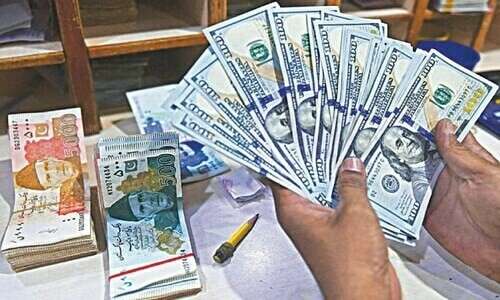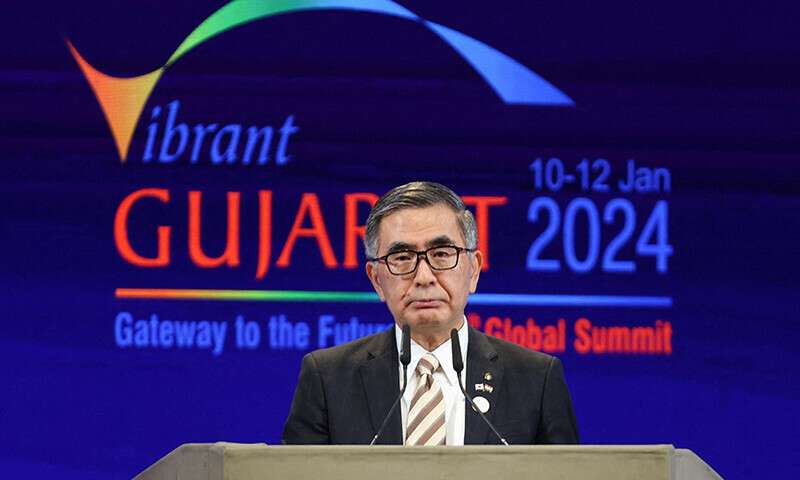In recent months, Pakistan has seen a significant surge in remittances, largely attributed to the government’s crackdown on illegal foreign-exchange trading. According to Bloomberg’s report, remittances to Pakistan surged by 34%, totaling $14.8 billion in the five months through November. This uptick has been praised as one of the key factors behind the strengthening of the Pakistani rupee, which gained 2% this year, making it one of the best-performing emerging-market currencies. This article delves into the measures taken by Pakistan, their impact on remittances, and the broader economic effects of these interventions.
The Surge in Remittances: A Positive Indicator for Pakistan’s Economy
Rising Remittances: The Key Numbers
Pakistan’s remittances have witnessed impressive growth, reaching $14.8 billion between July and November. This marks a 34% increase compared to the previous year, reflecting a robust recovery. The State Bank of Pakistan (SBP) attributes the increase to a combination of factors, including improved economic policies, the IMF-backed economic reforms, and the shift of many transactions from the informal to the formal foreign exchange market.
Finance Minister Muhammad Aurangzeb expressed optimism, projecting that remittances could reach $35 billion by the end of the current fiscal year. According to SBP data, Pakistan received $11.85 billion in remittances during the first four months of FY24, averaging nearly $3 billion per month. In October, Pakistan saw remittances of $3.052 billion, further demonstrating the growing trend.
Impact on Currency and Foreign Exchange Reserves
The rise in remittances has also had a noticeable impact on the Pakistani rupee and the nation’s foreign-exchange reserves. The rupee strengthened by 2% in 2023, emerging as one of the best-performing currencies among emerging markets. The increase in remittances has been credited with supporting the rupee’s resilience amid the country’s ongoing financial challenges.
Furthermore, Pakistan’s foreign-exchange reserves surged to over $12 billion by the end of November, marking the highest level since March 2022. Experts suggest that the crackdown on illegal foreign exchange trading has been a key driver in encouraging remittances to flow through official channels, thereby boosting Pakistan’s reserves and stabilizing the currency.
The Role of Crackdowns on Illegal Dollar Trading
Tackling Unofficial Dollar Trading
A significant factor contributing to the surge in remittances has been Pakistan’s crackdown on illegal foreign-exchange markets. In recent years, Pakistan had faced the challenge of widespread unofficial dollar trading, which inflated exchange rates and discouraged remittances through formal banking channels.
The government, in coordination with the Federal Investigation Agency (FIA), launched a series of targeted actions against illegal currency exchanges. These included raiding the offices of money changers, arresting individuals involved in illicit activities, and deploying undercover officials at exchange points to monitor suspicious transactions. The efforts, which began more than a year ago, have led to a reduction in the size of the black market for dollars.
The Effect on Formal Banking Channels
The crackdown appears to have successfully redirected many transactions through formal banking channels, as evidenced by the growth in remittances. Zafar Paracha, the general secretary of the Exchange Companies Association of Pakistan, estimated that the size of the illegal dollar market had dropped by at least 20% over the past two years. As a result, approximately $10 billion has been channeled into formal banking systems, providing a much-needed boost to Pakistan’s economy.
The increased reliance on official channels for remittances is viewed positively by economists, as it helps stabilize the currency and fortify Pakistan’s foreign-exchange reserves. According to John Ashbourne, an emerging-market economist at BMI, the rise in remittances is likely a result of the stability brought about by exchange rate reforms and the crackdown on illicit dollar trading.
The IMF’s Role and Economic Reforms
Support from the IMF Program
Pakistan’s improved remittance inflows have been bolstered by its ongoing partnership with the International Monetary Fund (IMF). Under the IMF’s guidance, Pakistan has implemented tough economic measures aimed at stabilizing the economy. These reforms have included reducing fiscal deficits, adjusting tax policies, and curbing inflation.
The IMF’s financial support has provided Pakistan with a cushion against external shocks, allowing the country to undertake necessary economic adjustments. This support has had a positive impact on the country’s currency and remittance inflows, as Pakistan benefits from the stability associated with the IMF-backed reforms.
Economic Stability and the Future Outlook
The ongoing economic adjustments, though challenging, are expected to pay long-term dividends. The rise in remittances, coupled with the crackdown on illegal foreign-exchange trading, signals that Pakistan is gradually moving toward greater economic stability. Experts suggest that as the country continues to implement reforms, it will attract more foreign investment and foster a more resilient financial system.
FAQs on Pakistan’s Economic Reforms and Remittances
1. What factors have contributed to the rise in remittances in Pakistan?
The primary factors contributing to the rise in remittances include the crackdown on illegal foreign-exchange markets, the implementation of IMF-backed economic reforms, and the stability of the Pakistani rupee.
2. How has the crackdown on illegal dollar trading affected remittances?
The crackdown has successfully redirected a significant portion of remittances to formal banking channels, reducing the influence of the black market and boosting Pakistan’s foreign-exchange reserves.
3. What role has the IMF played in improving Pakistan’s economy?
The IMF has supported Pakistan through financial assistance and economic reforms aimed at stabilizing the country’s fiscal and monetary policies, contributing to the rise in remittances and strengthening the rupee.
4. How much have remittances increased in Pakistan this year?
Remittances have risen by 34%, totaling $14.8 billion in the five months through November, compared to the previous year.
5. What is the future outlook for remittances in Pakistan?
The government is optimistic that remittances will continue to rise, with projections of reaching $35 billion by the end of the current fiscal year, supported by ongoing economic reforms and measures to curb illegal foreign-exchange trading.
Conclusion
Pakistan’s efforts to combat illegal foreign-exchange trading have not only improved the country’s currency and foreign-exchange reserves but also led to a significant increase in remittances. The crackdown, coupled with IMF-backed economic reforms, has helped redirect remittance flows to official channels, ensuring greater stability for the economy. As the government continues its efforts to stabilize the currency and attract foreign investment, Pakistan is poised for further economic recovery and growth
ALSO READ
https://flarenews.pk/2024/12/17/pm-shehbaz-condoles-over-greek-shipwreck-deaths-toll-rises-to-five/



